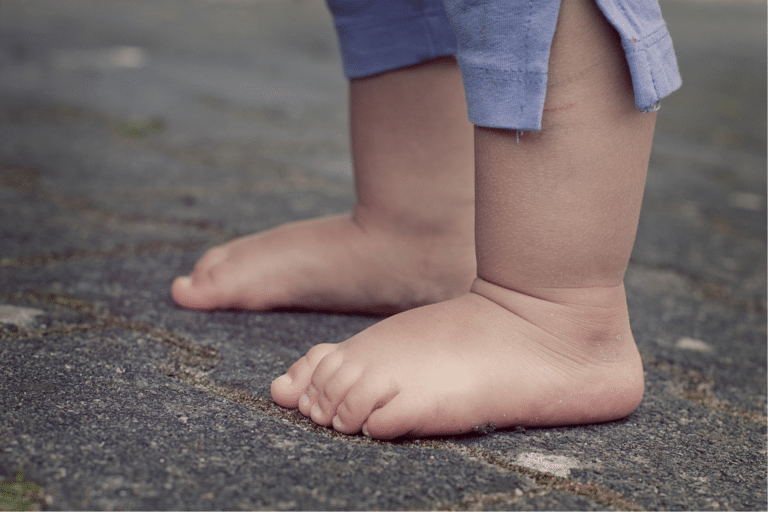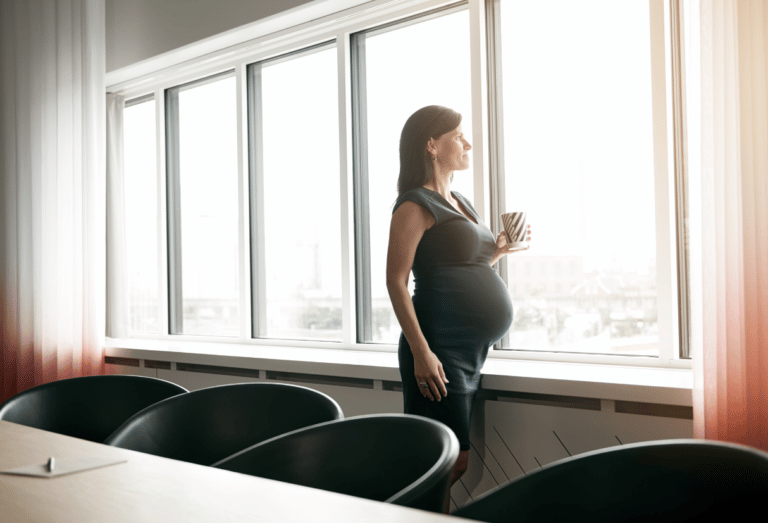Maintaining breastfeeding after a return to work or study is completely possible and many families choose to do this.
There are several things to think about when returning to work (or study), including what and how baby will be fed and cared for when you are not there, how to keep breasts comfortable while you are apart, and potentially the expression and storage of breastmilk.
It’s important that you let your manager or tutor know that you are returning as a breastfeeding mother – particularly as in the UK this is a ‘protected characteristic’ and means they can do a more effective risk assessment of the working environment for you and your baby’s needs.
Knowing that you do not have to stop breastfeeding, and that baby can continue to be breastfed when you are together, and fed expressed breastmilk or food or infant formula if necessary while you are apart, is the first step. Understanding how to express and store that milk and how the milk should be given to your baby, might be key for you when thinking ahead.
Employer considerations
In the UK, breastfeeding parents are protected in the same way as pregnant employees under health and safety and sex discrimination laws. Your employer should be supportive of you wanting to continue to breastfeed when you return to work, because there are significant health benefits to breastfeeding for both you and your child, particularly up to the age of 12 months.
Unfortunately, even in the UK those who are breastfeeding are not entitled to frequent breastfeeding or expressing breaks.
So what I am entitled to if I am breastfeeding when I return to work?
You are entitled to:
- A health and safety risk assessment.
- Providing regular breaks is good practice, so many employers are accommodating of a family’s particular needs.
- By law you are entitled to suitable rest facilities to express or breastfeed at work.
- These should have suitable sanitary conditions, and expressing or breastfeeding in a toilet facility is not hygienic or appropriate.
You should consider writing to your employer when planning to return to work to tell them you are breastfeeding so they can carry out a suitable risk assessment. You might consider outlining what you feel you need to feel best supported with returning to work; this might include details of privacy needed and of milk storage facilities. Your employer has an obligation to provide health and safety protection, protection from discrimination, rest facilities, flexible working hours and protection from indirect sex discrimination and protection from harassment.
There is loads more information on managing your return to work in the Anya app, and we also have a dedicated Returning to work or study Community so you can chat to other parents experiencing the same things as you.
Childcare considerations
A nursery or registered child minder should have experience of using expressed milk and should have guidelines around storage and so on – so when finding a child care setting, you can ask about this and how they are set up to manage expressed milk: if they have not handled human milk before or do not have a protocol for using it then give them plenty of time to create one – if they are reluctant perhaps this is not the best setting to have your baby?
They should have a fridge to store the milk and a way of warming it if necessary. And a labelling system so that your milk is not given to another child or vice versa.
Before 6 months
The volume of milk a baby will take when away from mum will vary, but we usually work on a guide amount of 1 – 1.5 ounces (30-45mL) per hour since they last fed, for an exclusively milk fed baby.
So, if you fed at 12 noon and were going to be away from baby for 8 hours, we might expect baby to want to feed at least twice in that time with a total volume of 8 – 12 ounces, over minimum 2 feeds. This means you would leave 12 ounces, and the person staying with baby would need to know about paced, responsive feeding.
After 6 months
As babies begin to take food as well, they become less reliant on breastmilk. If they are younger than 9 months, it is more important to leave some expressed milk as your baby may not be so well established onto solid foods. For shorter periods apart they will be absolutely fine with no milk.
If you’re leaving your baby for a short time or they are very well established on solid foods, they may need less milk or none. Some older babies will feed more frequently when you are together to make up for any milk they did not receive when you were apart.
If your child is 9 months or over, they may be fine without any milk in the day and just have solid food and water, so it would not be essential to send expressed milk with your child. However, you may prefer to send some expressed milk with your older baby and that is fine. It is up to you and your child care setting should enable this.
Don’t forget to get involved in the dedicated Community channel in the Anya app, and #AskAnya for help and support with any questions or concerns you have.











